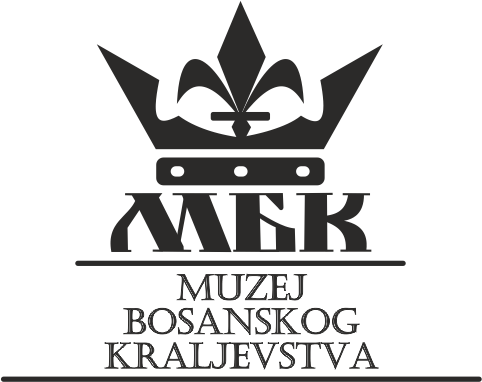The second half of the 13th century represents an era of peace and silence in the sources regarding the knowledge of religious relations between Bosnia and the Roman Curia. It was during this period that the initial phase of a new form of institutional religious life in the Bosnian state took place. The growth of the religious organization, with the same name as the former diocese, the Bosnian Church, is shrouded in mystery. In spite of the fact that the situation in Bosnia and the activities that were undertaken were frequently mentioned in the letters of the Roman popes during the first half of the 13th century, there is no written record of the institutional religious picture in the Bosnian state area. The process, which apparently started even earlier, took on a more definitive character with the dislocation of the diocese. From the middle of the 13th century, several elements came together, the most important of which were the infrastructure of the Bosnian diocese, a monastic group that had been accused of heretical teachings for decades, and domestic (folk) worship acceptable to the local population. In this way, a group that was characterized as heretical by the Roman Church filled the place previously occupied by the Bosnian Catholic diocese. The merging of the organizational framework and the name of the former Bosnian diocese with a different form of teaching and organization marks the beginning of the independent existence of the Bosnian Church. The first mention of this church organization and its hierarchy is witnessed in the charter of the Bosnian Ban Stjepan II Kotromanić (1322-1353) tentatively dated 1326-1329.
This charter by which the Bosnian ban gives possessions to prince Vukoslav Hrvatinić, drawn up in a hiža, a religious facility of the Bosnian Church where a gost Radoslav (a member of the hierarchy of the Bosnian Church) stayed, was issued in front of djed, the head of the Bosnian Church, Radoslav, gost (a member of the hierarchy of the Bosnian Church) Radoslav, and starci (members of the hierarchy of the Bosnian Church) Radomir, Žunbor and Vučko, and in front of in front of the church hierarchy (Sva Crkva) and the assembly of the Bosnian rulers (Sva Bosna). A direct mention of the Bosnian Church was recorded in the charter of Ban Stjepan II dated 1329/1330, in which he donated possessions to Prince Grgur Stjepanić, in which the Bosnian Church served as a guarantor of respect for the decision made and the arbiter in potential non-compliance with the promise. The Bosnian Church represented a clearly defined church structure seven decades after the pivotal religious event, providing an alternative to the dislocated Bosnian chapter and the Catholic diocese located outside of Bosnia. The hierarchy of the monks of the Bosnian Church included the djed or the bishop – who was at the head of this church organization, and the strojnici – who were divided into a higher level of gosti and a lower level of starci.
During the following centuries, the Bosnian Church was the strongest religious organization on the territory of the Bosnian state, and its disappearance from the historical stage is almost concurrent with the collapse of the state during the 15th century.
Sources and literature:
- Ćirković Sima, “Bosanska crkva u bosanskoj državi”, in: Prilozi za istoriju Bosne i Hercegovine I: Društvo i privreda srednjovjekovne bosanske države, ed. Enver Redžić, Akademija nauka i umjetnosti Bosne i Hercegovine, Sarajevo 1987, 205-206, 211-212.
- Ćošković Pejo, “Ustrojstvo Crkve bosanske”, in: Zbornik radova sa znanstvenog skupa u povodu 500. obljetnice smrti fra Anđela Zvizdovića, ed. Marko Karamatić, Franjevačka teologija Sarajevo-Franjevački samostan Fojnica, Sarajevo-Fojnica 2000, 61-83.
- Ćošković Pejo, Crkva bosanska u XV. stoljeću, Institut za istoriju, Sarajevo 2005, 275-442.
- Džaja Srećko M.i Lovrenović Dubravko, “Crkva bosanska (Ni bogumilska, ni dualistička, nego šizmatička i državna crkva)”, Jukić, no. 38-39/2008-2009, Sarajevo 2009, 242, 245-246.
- Fine John V.A, Bosanska crkva: Novo tumačenje, Bosanski kulturni centar, Sarajevo 2005, 159-160, 184-186.
- Lovrenović Dubravko, “Krist i donator: Kotromanići između vjere rimske i vjere bosanske – I. (Konfesionalne posljedice jednog lokalnog crkvenog raskola)”, in: Fenomen „krstjani“ u srednjovjekovnoj Bosni i Humu, ed: Franjo Šanjek, Institut za istoriju u Sarajevu-Hrvatski institut za povijest, Sarajevo-Zagreb 2005, 195-196.
- Mrgić-Radojčić Jelena, “Povelja bana Stjepana II Kotromanića velikom knezu Grguru Stjepaniću”, Stari srpski arhiv, no. 3, Filozofski fakultet u Beogradu-Filozofski fakultet u Banjoj Luci, Beograd-Banja Luka 2004, 20.
- Mrgić Jelena, “Povelja bana Stjepana II Kotromanića kojom knezu Vukoslavu Hrvatiniću daje svoju „vjeru gospodsku”, Stari srpski arhiv, no. 7, Filozofski fakultet u Beogradu-Filozofski fakultet u Banjoj Luci, Beograd-Banja Luka 2008, 52-53.
- Thallóczy Lajos, “Istraživanja o postanku bosanske banovine sa naročitim obzirom na povelje körmendskog arkiva”, Glasnik Zemaljskog muzeja u Bosni i Hercegovini, no. 18/4, Sarajevo 1906, 404-405.
